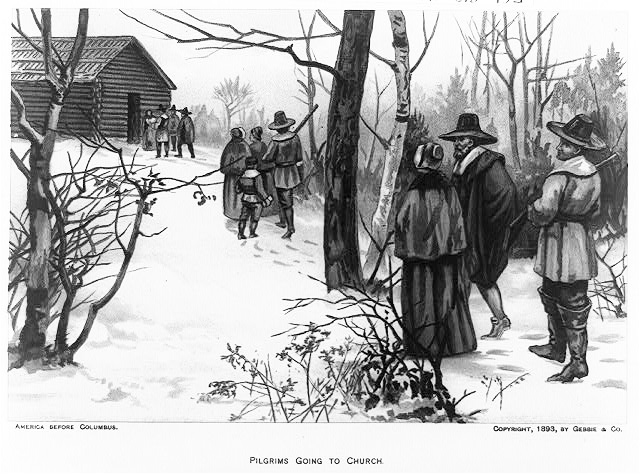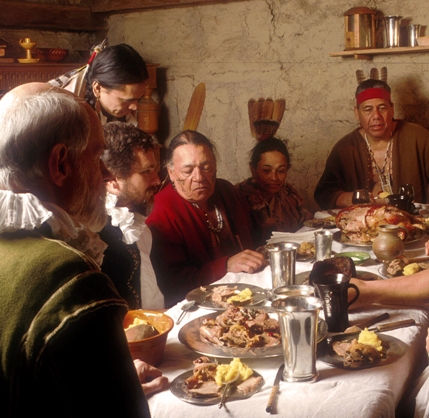

Pilgrim or Puritan?
We today often use the words Puritan and Pilgrim interchangeably, and yet the difference in the two is quite significant: those who came on the Mayflower to found the starving colony of Plymouth in 1620 were the Pilgrims; the story of the first Thanksgiving is their story. The Puritans were those who later fled the religious constraints of England and established the Massachusetts Bay Colony—today’s Boston–and other colonies in the years following 1629. Within the next ten years, over twenty-one thousand Puritans would flood across the hills and valleys of New England.
For those Plymouth Pilgrims enduring their first New England winter and spring, starvation was always near at hand. They had brought too little food; their crops grew poorly in the weak soil and their system of communal farming did not work efficiently.
By 1623, Governor Bradford would turn portions of the common land over to each family in the colony; the families would plant and farm that land, and they would be allowed to keep whatever they grew. This new policy would bring about a change in attitude, and farming at Plymouth would suddenly become much more successful.
Thus, the Pilgrims would stumble upon the principle of capitalism, and discover that it worked! But these events were still far off in the future, and more than half of their number would die during that first dreadful winter.
They had landed at Plymouth in December, 1620. They were weak and sickly, entering this barren new world hungry, and with little food to sustain them. The deep and abiding courage that carried them through this bleakest of times, came from their unshakeable faith in God.
By the next September or October (records are unclear), the Pilgrims met with the friendly Pokanoket Indians for a feast. This feast was something new to the Pilgrims, but to their secular English counterparts at Plymouth, it was a pleasant reminder of the Harvest Home celebrations back in England. The feast must have taken place shortly after the Pilgrims harvested their first modest crop of corn, squash, beans, barley and peas.
Coincidentally at the harvest-time, Plymouth Harbor also played host to a tremendous number of migrating birds, particularly ducks and geese. Governor Bradford therefore ordered a number of men to go out “fowling.” It took only a few hours for the hunting party to kill enough ducks and geese to feed the settlement for a week.
The Pilgrims clasped hands together and gave thanks to God at a long table covered with a white linen cloth. Shortly thereafter, they were joined by over one hundred Pokanokets, led by their sachem Massasoit. The Indians had brought along five deer to add to the feast. There wasn’t enough furniture to go around, so most had to stand or squat in happy anticipation, as the deer and birds turned on wooden spits over open fires.
It was a time of plenty, a time of harmony and rejoicing, and a brief time of brotherhood between the English and the Native Americans. The name “Thanksgiving” would not be applied to this great feast until the 19th Century—but whatever the name, the warm memory of that day lives on today in our most American of holidays!
Happy Thanksgiving!